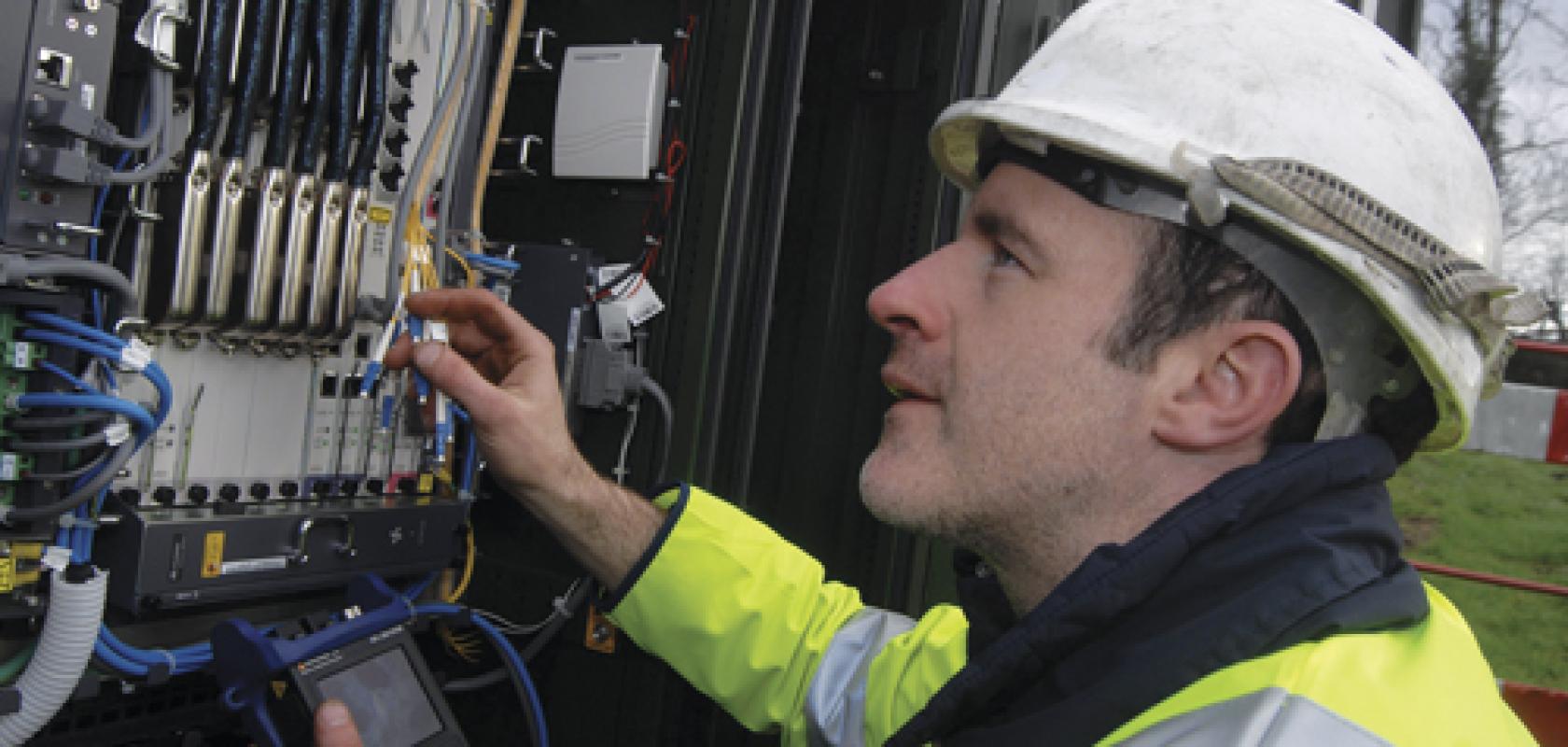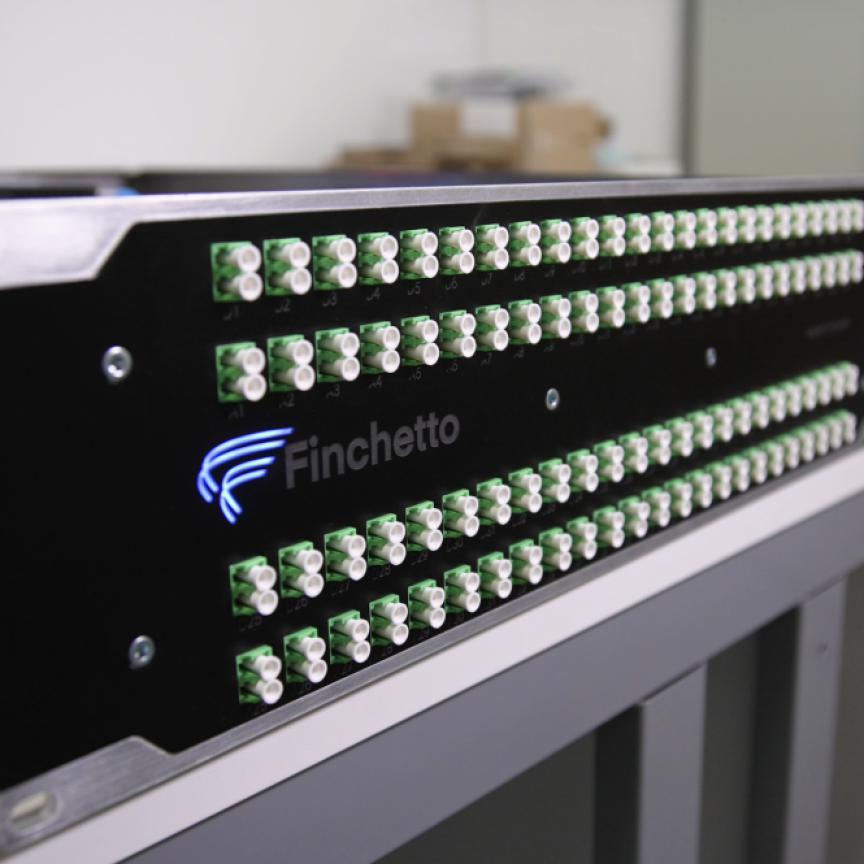For companies across the information and communication technology (ICT) spectrum, from manufacturers to telecommunications providers, helping reduce the world’s greenhouse gas emissions is a serious challenge. That’s according to Luis Neves, chairman of GeSI, the Global e-Sustainability Initiative, which represents 35 companies in the sector. ‘We see an exponential data increase leading to more energy consumption,’ he stated. However, there is cause for optimism. ‘More efficient energy network management and investments in more intelligent and efficient infrastructure network equipment from telecom carriers are decoupling growth and carbon emissions,’ Neves explained.
These issues come to the forefront in part from ongoing international negotiations over climate change driven by greenhouse gas emissions. The latest treaty, the Paris Agreement, went into effect in November 2016 and aims to hold global average temperatures ‘well below 2°C above pre-industrial levels’. To achieve this, a majority of national governments have committed to emission cuts, for which reductions in burning fossil fuels to generate electricity are prime targets. And with surging data growth, the communications industry is busy taking steps to avoid and offset an accompanying increase in energy consumption.
On the offsetting side, Neves emphasises that ICT can play a key role in helping the world’s other industries meet their emissions commitments. GeSI’s ‘SMARTer2030’ report, published in 2015, foresees ICT enabling an enormous overall reduction, equivalent to 12 billion tonnes (Gt) of global CO2 emissions (CO2e). That’s 20 per cent of what they might otherwise have reached by 2030, and would keep the world’s total overall emission levels steady at what they were in 2015, GeSI claims. ‘This means that ICT can potentially avoid the trade-off between economic growth and environmental protection,’ Neves said.
Yet data growth will more than double ICT’s own carbon footprint from GeSI’s estimate of 0.53Gt CO2e in 2002 to 1.25Gt CO2e in 2030, or 1.97 per cent of global emissions. GeSI points out that this would be far outweighed by benefits to other sectors – and that ICT businesses are extremely motivated to minimise their energy consumption for cost reasons.
Down with prices
For example, Stockholm’s international network infrastructure and service provider Telia Carrier needs energy-related cost savings to keep pace with falling prices per megabit of traffic. ‘Cost efficiency is of essence to be relevant in the carrier market,’ said Mattias Fridström, Telia Carrier’s chief evangelist. The firm constantly reviews its energy consumption.
‘We always remove and replace older equipment,’ Fridström explained. ‘We review the network’s design to verify we are using all gear at optimal performance. We are also pushing equipment suppliers to make sure the next generation of gear consumes a lot less power per megabit. As a result of this, our total power consumption decreased by around eight megawatt-hours from 2015 to 2016. We are again on pace to consume the same or less power as the year before despite an enormous increase in actual traffic.’
One significant decision Telia Carrier recently made was completely replacing its European DWDM network. ‘We had enough capacity in the old system for a few more years,’ Fridström admitted. ‘But the new equipment draws so much less power and occupies so much less space we feel it’s worth doing it. The cost of power is so significant now and if the environment also gains from that, then so much the better.’
This situation occurred partly because equipment capital expenditure (capex) costs have fallen, while energy consumption’s contribution to operating expenditure (opex) has increased. ‘Over a five-year period, the capex for a system is almost identical to the opex for power and space,’ Fridström explained. ‘Five years ago, capex was usually the limiting factor, and now opex is starting to be the one you have to care about.’
Madrid-headquartered telecom provider Telefónica plans to halve its energy consumption per bit of traffic between 2016 and 2020. Part of this programme is also centred on equipment substitution, says Maya Ormazabal, the company’s environmental and climate change manager. She adds the resulting network transformation in the company’s fixed-line business reduces energy consumption by concentrating its operations into fewer buildings, allowing it to exit older sites. That’s significant because the firm’s fixed-line business switch sites account for 35 per cent of its energy consumption.
‘Telefónica in Spain is an example,’ Ormazabal said. ‘Telefónica is switching off fixed-line buildings, because we are aggregating and concentrating. Fibre was always expected to consume more power, but it’s not because we are disconnecting old copper-based technologies.’ The company is also installing power-saving features, adds Geert Paemen, Telefónica’s director of sustainability and intangibles management. ‘If there’s not a lot of traffic, we can put sites on standby,’ she explained.
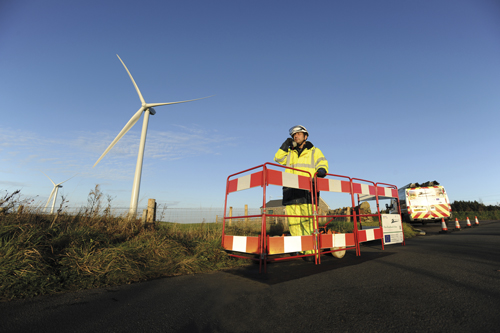
The communications industry is looking to stabilise its energy consumption in the face of exponential traffic growth and adopt renewable energy (Credit: Johnnie Pakington via Flickr Creative Commons CC BY 2.0 Licence)
Free and cool
With air conditioning ‘very relevant in terms of our service and energy consumption’ according to Ormazabal, Télefonica adopts ‘free cooling’ wherever possible, in every country it operates in. Among many options available, opening up facilities to allow cool air flow is perhaps the simplest. Fans can also drive air flow that cools water used in chillers to regulate humidity and temperature in switch rooms. ‘We use free cooling mainly in base stations for our mobile networks – we have thousands, and the investment gives a really good return,’ Ormazabal says. Mobile network base stations account for 41 per cent of Telefónica’s energy consumption, and cooling them had previously been around a quarter of that.
From 2010 to 2016 Télefonica conducted 257 climate-aware initiatives including equipment substitution, power saving features and free cooling, saving it 492GWh, and €64 million in electricity says Paemen. ‘We avoided emissions equivalent to more than 142,000 tonnes of carbon dioxide,’ she added.
Andrew Lord, head of optical networks R&D for BT’s Technology, Service and Operations division in Ipswich, UK, highlights that network evolution must also consider energy used in manufacturing equipment. ‘It is rarely a good idea to replace or update too frequently because, whilst we would reduce energy costs, the overall impact on the planet would be negative,’ he noted. ‘I cannot stress enough the importance of understanding full, end-to-end, whole lifetime impacts before making conclusions about the best approach for reducing global energy use or carbon footprint!’
Nevertheless, BT too reduced energy consumption while growing traffic 40 per cent annually by replacing equipment. It has done this over the last seven years while deploying fibre to the cabinet (FTTC), which now covers more than 90 per cent of the UK. Lord claims that this technology has the lowest end-to-end energy and carbon footprint compared to commercially available alternatives such as fibre to the premises (FTTP). ‘This is a result of differences in energy consumed in the home by FTTC and FTTP modem/hubs,’ Lord explained. Energy consumption is proportional to data rate, making 2.5Gb/s GPON-based FTTP optical network units (ONU) more energy-hungry than the 80Mb/s modems that BT customers use.
However, evidence shows FTTP definitely helps to reduce overall power consumption, Lord adds. ONU consumption should diminish, because it’s envisioned multi-wavelength passive optical network (PON) systems will have standardised power saving modes. Furthermore, the outside plant for FTTP needs no power. ‘FTTP optical line terminals (OLTs) can support many more customers using PON than other technologies given the same bandwidth,’ Lord said. ‘The footprint at the local exchange or metro node is reduced, and so is the cost to communications providers who consume backhaul products.’
BT is trialling different ultrafast FTTP GPON variants with Chinese vendor Huawei. The 10G down and 2.5G up XG-PON and 10G symmetric XGS-PON protocols consume slightly more energy than basic GPON, but consume less power per bit and have mandatory power-saving modes. However, the current generation of equipment supporting NG-PON2, though operating at the same data rate of 10Gb/s up and down, will have power consumption far greater than XG(S)-PON, Lord explains. Despite this, power-saving modes are again mandatory, and power consumption per bit is expected to be lower than prior PON technology. ‘It is possible to shut down OLT PON transceivers in low traffic conditions by moving all active ONUs in the PON to a single wavelength,’ Lord added.
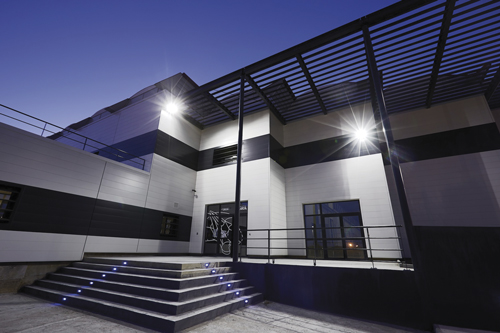
Careful consideration of where Telia Carrier locates its points of presence, like this one at the Jaguar Network's data centre in Marseille, France, is helping control its energy consumption (Credit: Telia Carrier)
By contrast progress in optical technologies offers little benefit to data centre energy consumption, Lord points out, as converting data from electronic to optical format itself consumes energy. ‘Within the data centre, transmission distances are short so that data rates need to be very high before optical transmission gives you an end-to-end energy benefit,’ he explained.
Telia Carrier consumes the majority of its power in data centres – and Fridström stresses that they are becoming more efficient. ‘There is enormous pressure on people that make equipment in the data centres to consume less power, from the content people, the ISPs, and us, the carriers,’ he said. ‘Five years ago, most people said the best performance was always the winner. Now it´s sometimes more focus on how much power the box consumes than how many megabits it can transfer. As long as performance is good enough, then the power consumption is the key factor.’
And Telia Carrier’s transformation to a lower-emission network has involved a lot of effort in planning ideal locations, to reduce the energy associated with sending data over longer distances. ‘Because energy consumption has become such a big proportion of our total cost, we have to be very much more careful about where we are, where we can afford to be,’ Fridström said. ‘We have started to look at making sure that we’re not just staying in the location where we have one or two customers because we don’t want to upset those customers. It’s better that we tell them “If you would move your service, we would save money and thereby provide you with more cost-effective services”. Maybe we only need four places in a city, we don’t need to be in six or eight.’
This cuts power consumption, but Telia Carrier is further reducing the emissions it is responsible for by buying power from renewable sources where possible. Where its points of presence (PoPs) are located is also an important consideration, Fridström explains. ‘We need to carefully review where to store our equipment,’ he said. ‘PoPs where heat and cooling is reused will always be a preferred alternative. Unfortunately, there are not many out there yet. PoPs buying their power from renewable resources will also be preferred.’
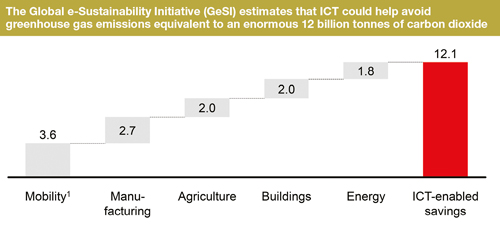
Telefónica also intends to adopt renewables, aiming to convert to them while keeping its energy consumption stable in the face of growing traffic. ‘There is a very strong process to reduce our energy costs and consumption as much as possible on the basis of efficiency,’ Paemen explained. ‘We will stabilise them as much as possible and at the same time reduce emissions because we will be increasing, gradually, our use of renewable energy.’ By 2020 50 per cent of the electricity Telefónica uses will come from clean sources, and 100 per cent by 2030, the company has undertaken. ‘We think we are quite ambitious taking into account some of the markets that we are working in,’ Paemen said. For example, in some Latin American countries where Telefónica operates, it can’t choose what kind of energy it purchases and doesn’t know how that will change, she notes. Nevertheless, the company’s projections indicate that both the energy efficiency efforts, but also the switch to renewable energy will reduce its costs, Paemen adds.
No limits
With energy consumption apparently not tracking exponential data growth, suggestions by communications and computer scientists at Lancaster University, UK, to ‘limit the size of the internet’ seem unnecessary. And while Telefónica is ‘interested’ in this idea, according to Paemen, the company echoes GeSI’s position about the broader offsetting benefits of ICT in areas like the Internet of Things (IoT). ‘We see the use of IoT and much more meticulous measuring of the energy as helping reduce energy consumption rather than increase it,’ she said. ‘The things we are working on right now are things like smart cities, smart buildings, smart transport, all this is aimed, among other things, at reducing energy consumption. We believe that in the end, the outlook shouldn’t be that negative.’
Lord likewise sees ‘no evidence to support “runaway” energy consumption’. ‘I would suspect that such an outcome would self-regulate through higher costs,’ the BT executive said. ‘Our worst-case models help explain why some scientists suggest this type of scenario, but these tend to be either simplistic worst case scenarios, or they require some pretty odd economic and political situations to occur.’
The GreenTouch consortium has shown there is scope for continued network energy reduction, even with rapid traffic growth, Lord adds. Using various technologies, architectures, components, algorithms and protocols, GreenTouch concluded net energy consumption in end-to-end communications networks could be cut by up to 98 per cent by 2020 compared to 2010. He points to the way the internet can reduce carbon emissions elsewhere. ‘BT is measuring that for every tonne of CO2 we emit, our customers save 1.6 tonnes,’ Lord said. ‘For example, smart logistics can reduce the fuel needed for a fleet for a relatively small requirement on data transmission and processing.’
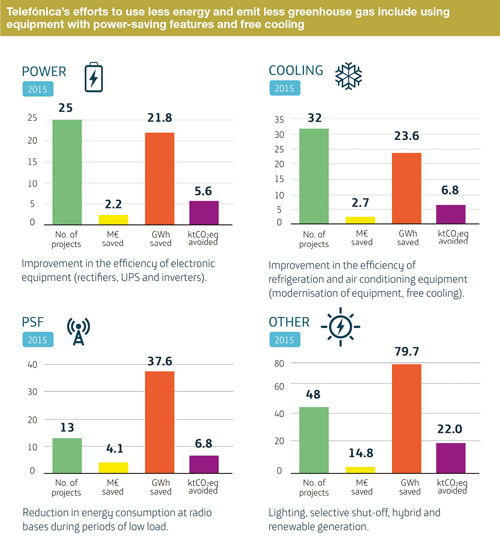
Neves says the question of ‘limiting the internet’ goes beyond the energy consumption and even the decision-making power of industry. Meanwhile, GeSI’s forecasts for the growth of the digital economy certainly provide a strong case against limits. ‘An assessment of mobility and logistics, manufacturing, food, buildings, energy, work and business, health and learning shows ICT could generate over $11 trillion in economic benefits per year by 2030, the equivalent of China’s GDP in 2015,’ Neves said. ‘ICT will connect 2.5 billion extra people to the knowledge economy by 2030, giving 1.6 billion more people access to healthcare and half a billion more people access to e-learning tools. Therefore, our approach is two-fold: encourage investment on broadband infrastructure as a driver of greater efficiencies and societal benefits through the enabling capacity of ICT, while at the same time becoming more efficient in managing our own operations. That is why GeSI committed at the Climate Conference in Paris at the end of 2015 to achieve a 25 per cent efficiency reduction target on its own operations.’
To help get the full benefits, Neves asks policymakers to do three things. First, set and enforce global and national emissions targets. Second, incentivise investments in broadband infrastructure to connect the unconnected and enable more people to gain access to ICT. Third, establish a fair, balanced and consistent regulatory approach. The result, Neves stresses, should be accelerated widespread adoption of the ICT solutions needed to reap the enormous broader societal and environmental benefits identified in GeSI’s SMARTer2030 report. ‘ICT has the potential to create a more hopeful and prosperous future, putting the citizen at the heart of a sustainable digital economy,’ he stated.
ICT’s chief role is to blaze a trail by breaking the link between data and energy consumption, so other sectors can realise similar opportunities. ‘Sourcing from renewables is an important step in the transition to a low-carbon economy,’ Neves conceded. ‘But our message about the ICT enabling potential can only be reinforced when we show a proactive approach in being more efficient ourselves. And after all, it has been said that the cheapest unit of energy is the one you don’t use!’
Andy Extance is a freelance science writer based in Exeter, UK
(Lead image credit: Johnnie Pakington via Flickr Creative Commons CCBY2.0 licence)

